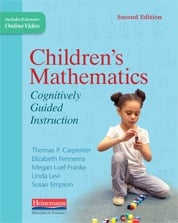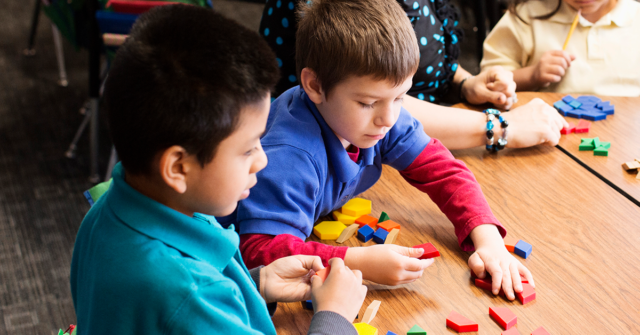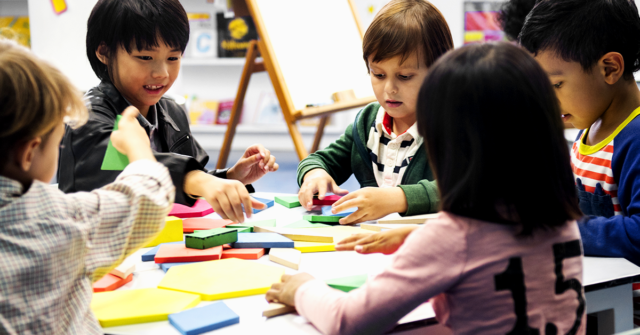
By Thomas Carpenter, Elizabeth Fennema, Megan Loef Franke, Linda Levi, and Susan Empson
“My journey as a CGI teacher has been exciting, not only for me but for my students and colleagues. My students have taught me about math through their amazing thinking. I really enjoy learning, listening, and developing mathematical understanding with my students and colleagues.”
—Kathleen Bird, teacher
Beginning to use Cognitively Guided Instruction (CGI) is all about making sense of children’s thinking, listening to your students, and experimenting with your classroom practice. Learning about children’s thinking continues as you teach and thinking about your teaching can help you see what more you want to learn about children’s mathematical thinking.
Becoming a CGI teacher takes time. Changing your classroom practice so that you can draw on knowledge of the development of children’s mathematical thinking can be challenging. Yet, teachers consistently report that although they felt uneasy as they started CGI, the rewards were worth the struggle for them and their students. We have found that one way to alleviate the uneasiness, and to begin the journey which Kathleen Bird describes above, is to simply get started.
Most teachers start to use CGI by asking students to solve problems like those discussed in Children’s Mathematics. They choose word problems set in contexts within which their students are familiar. When teachers pose these problems, they do not demonstrate a strategy for solving a given problem type, although they may engage students in a discussion of the context in which the problem is set to be sure that students understand what the problem is about. Students are provided a variety of tools and encouraged to use a strategy that makes sense to them. As students solve the problem, teachers find it useful to move around and observe various students asking them about what they are doing, as a way to understand students’ strategies and provide support when necessary.
There is no optimal way to organize a CGI class. Some teachers prefer to start by working with a small group of students. In other instances, the entire class is given a problem to solve and discuss. Sometimes teachers adapt the numbers in a problem or provide different problems for different students. Whatever organization enables you to support the students to solve problems using their own strategies and provides you opportunities to listen to the students’ problem-solving strategies is an appropriate organization for you. Finding an organizational structure that works for you and your students may require you to experiment with how you pose problems and support students to share their ideas; and in turn, this experimentation and reflection will lead to ongoing learning for you and your students.
In CGI classes, students learn most new content by engaging in problem solving. Solving and discussing a variety of problems supports students to develop both concepts and skills. Problems can be posed as word problems or symbolic problems or in other formats. The critical consideration is that students are engaged in deciding how to solve problems using what makes sense to them.
Unlike traditional instruction in which the content to be learned is clearly sequenced (addition before subtraction) and where students learn skills before they use them to solve problems, the curriculum in CGI classes is integrated. For example, students do not learn number facts as isolated bits of information. Rather they learn them as they repeatedly solve problems, so that they begin to see relationships between the various facts. Both word problems and symbolic problems are the vehicles through which students learn mathematical concepts and skills. Teachers choose problems so that they will enhance students’ development, but in most cases do not provide explicit instruction on problem-solving strategies. Instead, students develop and share their own problem-solving strategies, which become more efficient and abstract over time. Skills and number facts are learned in the process of problem solving and are thus learned with understanding rather than as isolated pieces of information.
Discover more about Children’s Mathematics and Cognitively Guided Instruction at Heinemann.com/ChildrensMath, and preview the new edition by downloading a sample chapter.



